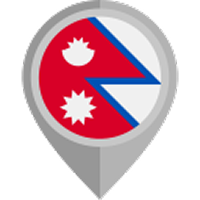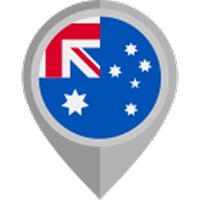Nepal vision | 07/12/2023
The ultimate trekking escape, where the Himalayas play hide-and-seek with the gods! Mount Kailash Trek is the mystical guide to bridge the gap between earthly paths and spiritual areas.
Mount Kailash is a superstar in the spiritual world. It's not just a mountain; it's like a divine celebrity.
Additionally, Mount Kailash is like a special place for different beliefs. Hindus see it as Lord Shiva's home, Buddhists consider it a significant spot, and Jains consider it an area linked to enlightenment.
The spiritual vibe with the adventure of trekking in Nepal. That's where our fantastic journey starts – a trek so incredible you might feel like you're walking on clouds.

How do you start your planning for Mount Kailash Trek?
The Mount Kailash trek comprises a 53-kilometre loop encircling the sacred Mount Kailash.
It is one of the most challenging treks globally. It involves steep ascents and descents. This trek is also among the world's highest, commencing at 4,670 meters and reaching its pinnacle at 5,650 meters.
Planning for the Mount Kailash trek is relatively easy if you have a checklist and mark them. Let's break down these factors.
Permits and Regulations
Obtaining the necessary permits before embarking on the Mount Kailash trek from Nepal.
Check with local authorities and trekking agencies to understand the specific permits required for the region.
These permits include national park entry permits, special permits for restricted areas, and other regulatory documents.
Familiarise yourself with the local regulations to ensure a smooth and compliant journey. Sticking to permits ensures legal compliance and supports environmental conservation efforts.

Best Time to Visit
Choosing the right time for the Mount Kailash trek is essential for a safe and enjoyable experience.
The best times to visit are generally during the pre-monsoon (May to June) and post-monsoon (September to October) seasons.
The weather is relatively stable during these periods, with milder temperatures and less precipitation.
Avoid the winter months when the region experiences harsh weather conditions and some trekking routes are closed.
Planning your visit to Mansarovar and Mount Kailash during the optimal seasons enhances your chances of clear views and safer trekking conditions.
Itinerary of the Mount Kailash Trek
Day 1: Arrival and Acclimatization
- Arrive at Kathmandu airport and meet your tour leader.
- Transfer to a hotel in Kathmandu for the day.
- Use the day for acclimatisation and exploring the city.
Day 2-3: Travel to Trek Starting Point
- Drive from Kathmandu to Nyalam (3650m).
- Continue the journey to Saga (4487m).
- Reach Darchen (4600m) and explore the surrounding area.
Day 4-10: Trekking through Scenic Landscapes
- Day 4: Trek from Darchen to Dirapuk Monastery (7-8 hours, 18km, 550m ascent, 600m descent).
- Day 5: Return trek from Dirapuk Monastery to Dzultripuk Monastery (7-8 hours, 18km, 550m ascent, 600m descent).
- Days 6-8: Trek from Dirapuk Monastery to Zuthulpuk Monastery (2.5 hours daily).
- Day 9: Return trek from Zuthulpuk Monastery to Darchen (2.5 hours).
Day 10: Rest day in Darchen; explore the town and acclimatise.
Day 11: Return Journey
- Drive from Darchen to Saga.
- Continue the journey to Nyalam and then back to Kathmandu.

Trekking Difficulty and Fitness Requirements
The Mount Kailash trek involves challenging terrains and high altitudes. It is imperative to assess the trekking difficulty and ensure adequate fitness levels.
The trek demands physical endurance and stamina due to long hours of walking in varying elevations.
If possible, engage in a pre-trek fitness regimen that includes cardiovascular exercises, strength training, and altitude simulation.
Consult a healthcare professional to evaluate your health status and address concerns before starting the trek.
Preparing for the physical demands contributes to a safer and more enjoyable trekking experience.
Accommodation Options
Research and plan your accommodation options along the trekking route. Depending on the road and availability, accommodation choices may include guesthouses, tea houses, or camping.
Guesthouses and tea houses offer a chance to interact with locals and experience the region's cultural richness.
Camping provides a more immersive experience with nature but requires careful planning. Consider the distance between overnight stops and the availability of facilities.
Knowing your accommodation options beforehand ensures a comfortable and well-paced trek.
Getting There
First, figure out where to enter Nepal for your Mount Kailash trek. Key entry points include cities like Kathmandu and Nepalgunj.
Compare the distances from these entry points to your starting location and pick the one that fits your travel plans best.
You should also consider how easy it is to get there and the available transportation options.
Transportation Options
Check out the different ways to get to the starting point of the Mount Kailash trek. Depending on where you enter Nepal, consider using domestic flights, buses, or a mix of both to reach the trek's starting spot.
Plan your transportation ahead of time, considering factors like travel time, convenience, and your budget. Booking tickets and planning a ride well before your trekking dates are wise.
Travel Tips and Considerations
Before heading to Mount Kailash, consider a few essential travel tips for a smoother journey. Keep an eye on the weather for your entry point and the trekking route, and pack accordingly.
Stay informed about any travel warnings and be ready to adjust plans if needed. Carry essential documents, like permits and ID, and keep them in a safe, easy-to-reach place.
Learn about local customs to show respect to the communities you might meet.
And remember to stay hydrated and be mindful of your health, especially as you get used to different altitudes.
Challenges and Considerations
- Understand the risks of altitude sickness and its symptoms.
- Acclimatise gradually by ascending slowly and taking rest days.
- Stay hydrated and avoid alcohol and tobacco.
- If symptoms (headache, nausea) occur, descend to lower altitudes.
- Carry altitude sickness medication as a precaution.
- Keep a list of emergency contacts, including local authorities and tour operators.
- Ensure you can access communication devices such as a satellite phone or radio.
- Stay informed about the weather conditions along the trekking route.
- Plan your trek during the optimal seasons to avoid extreme weather conditions.

To wrap up, Mount Kailash's trek blends adventure with cultural and spiritual richness. With meticulous planning, expert guidance, and a focus on safety and comfort, everything from travel routes to accommodations. Nepal Vision trek ensures a smooth and memorable expedition.
FAQS
- How long is Mount Kailash Trek?
The Mount Kailash trek is approximately 52 kilometres long and takes around three days to complete.
- Why has no one climbed Kailash?
Climbing Mount Kailash is prohibited because of its sacred significance in Hinduism, Buddhism, and Jainism.
- Is it allowed to climb Mount Kailash?
No, climbing Mount Kailash is prohibited due to its religious importance; it is considered a sacred pilgrimage site.
- Can planes fly over Mount Kailash?
Planes are restricted from flying directly over Mount Kailash to respect its religious sanctity.
- Why is Mount Kailash mysterious?
Mount Kailash is considered mysterious due to its unique religious significance, unclimbed status, and role in ancient myths and legends.
- Are there any cultural events or festivals around Mount Kailash worth attending?
The Saga Dawa festival, celebrating Buddha's enlightenment, is a significant event, often attracting pilgrims and tourists.
- What wildlife might be encountered during the Mount Kailash trek?
While rare, wildlife such as blue sheep, marmots, and various bird species may be spotted along the trekking route.
- Are there alternative trekking routes around Mount Kailash for those seeking a different experience?
There are various trekking routes around Mount Kailash, each offering unique landscapes and cultural encounters.









